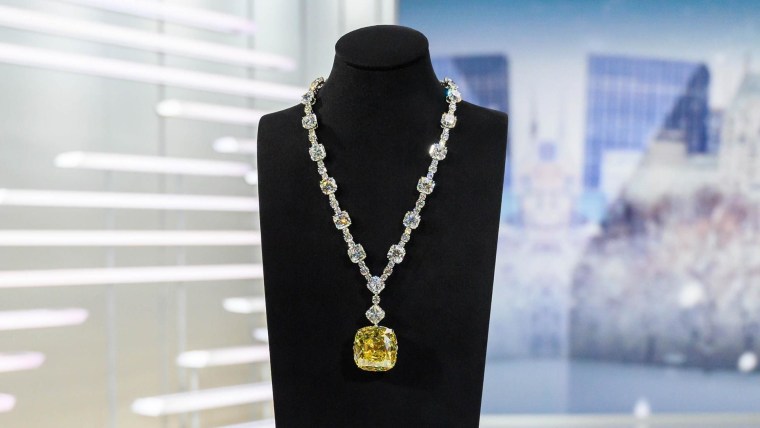This week, as Harvey Weinstein hobbles theatrically into the fifth week of his sexual assault trial, on the other coast, the 2020 Oscar for best director will go, as usual, to a man.
Two years after women in Hollywood formed Time’s Up to deal with the #MeToo reckoning, the Academy of Motion Picture Arts and Sciences decided that not one of the woman-helmed films was worthy of a best director nomination.
Perhaps it’s time for a modest proposal. A truly Oscar-worthy protest. One that hits the industry where it counts — in the wallet and in the part of the wallet that women fill.
I’m referring to the red carpet.
The vast majority of the Oscars audience do not watch the red carpet to judge the tuxedoes. They tune in for the dresses and jewels.
Besides perhaps for the stars of “Queer Eye,” the vast majority of the Oscars audience do not watch the red carpet to judge the tuxedoes. They tune in for the dresses and jewels.
What would happen if actresses in their couture gowns and accessories declined en masse to stop and pose for the cameras, depriving brands and media of another year’s worth of “best and worst” clickbait?
Or — gasp — what if they did stop and pose, but wearing mom jeans from Walmart?
A full boycott of the Oscars is impossible. Actresses can be contractually required or pressured by studios to show up if they participated in a nominated film.
But they don’t have to chat with the hosts of E!
In 92 years, there have been exactly five women directors nominated for best director. In 2020, from a record field of 12 woman-directed movies among the 100 top grossing films, zero got the nod.
In 2018, Time’s Up formed in response to the Weinstein accusations and the entertainment industry’s record of under-represented women at all levels. Within its first 60 days, the organization raked in $21 million in donations to pay for legal aid so that women could file complaints. As a sign of solidarity, actresses wore all black at the Golden Globes. There followed a brief flurry of industry concern and hand-wringing, in which, suddenly, Hollywood was desperate for female diversity.
Get the think newsletter.
That year, the Oscars’ producers allowed women to use the broadcast to focus on issues of sexual harassment and gender inequality. They put three Weinstein complainants — Annabella Sciorra, Ashley Judd and Selma Hayek — together at a podium to introduce a special segment celebrating the movie industry’s growing diversity and inclusion.
The “journey ahead is long,” Judd said. But she anticipated that men and women would be “singing together in a mighty chorus, saying ‘Time’s Up.’” The future of film, Judd asserted, would be one of “equality, diversity, inclusivity, intersectionality.”
Two years later, it seems true auteurs still do not come with a uterus.
When the Oscar shutout of women directors was announced in January, there was a riff of protest. “This is why Time’s Up exists,” the organization’s chief operating officer Rebecca Goldman said in a statement, “to ensure women in entertainment and across industries get the opportunities and recognition they deserve. And we won’t stop fighting until they do.”
It’s time to accept that powerful men who run the Oscars likely look at the Time’s Up movement the same way 19th-century males beheld any angry little woman: a lot of curls and coquetry, stamping her pretty feet.
Modern movie stars can wear all the black they want on the red carpet, and production companies can scour the country for “female-centric” dramatic stories. Behind closed doors, it looks like the same old boys’ club rules.
Adding insult to injury is how Hollywood continues to craft roles that demote women. Clint Eastwood gave Olivia Wilde, one of the year’s female directors, a classically regressive woman’s role in his film, “Richard Jewell.” She plays a real life (now deceased, and therefore unable to defend her reputation) print reporter reimagined as a seductress who traded sex with an FBI agent for information.
Martin Scorsese, basking in his ninth best director Oscar nomination for “The Irishman,” saw fit to use actress Anna Paquin to kick sand in the collective face of women by giving her exactly seven words of dialogue.
Paquin’s response to the role? Gratitude, of course.
“I’m incredibly happy,” she told The Hollywood Reporter. “I have such a tiny little role in the film, and I was so excited to get to be a part of it in the first place, and all of this [awards recognition] is just the icing on the cake.”
Robert De Niro, 76, who stars in “The Irishman,” thinks Paquin had quite enough to say. “She was very powerful and that’s what it was,” De Niro told USA Today. “Maybe in other scenes, there could’ve been some interaction between Frank and her possibly, but that’s how it was done. She’s terrific and it resonates.”
All of this is not to imply that the efforts of Time’s Up, the many individual stars who have taken up the cause and numerous production companies have been wasted.
Bobby, you still talking to me? It’s getting hard to hear you.
All of this is not to imply that the efforts of Time’s Up, the many individual stars who have taken up the cause and numerous production companies have been wasted. On the contrary, they have exponentially increased awareness of — and in many cases, shame about — gender inequality. Women are indeed helming more movies. Movies and television today do feature more female characters who are complex protagonists, both heroes and anti-heroes. Some even exhibit the “manly valor” that Aristotle, in his “Poetics,” deemed “inappropriate” in women.
But, will we have to wait another couple millennia for the American Academy of Motion Picture Arts and Science to reward female directors at a pace equal to the rewards showered on old bulls who spew out yet another mob or war film?
The value of the red carpet to the industry and to media that cover and broadcast it is hard to overestimate. In terms of earned media, it likely surpasses $100 million, Walt Hickey, Numlock News writer and senior data editor for Business Insider, said in an interview.
In 2019, over 12 million viewers tuned in on Oscar night to watch the pre-awards one-hour red-carpet broadcast, according to Hickey. A separate E! channel broadcast added another estimated 1.8 million viewers. In 2018 (the most recent figures available), for that 60 minutes of red carpet, ABC raked in $16 million in advertising — averaging around $1.6 million a minute.
With all those eyeballs, the potential value of red carpet earned media in the form of promotion of apparel, accessories and cosmetics is astronomical.
“Cancelling the red carpet would be like airing a primetime football game ad-free,” Hickey told me. “In terms of highlighting culture and fashion, no other night comes close.”
A red-carpet boycott is, of course, not on the table this year. For one thing, the Oscars red carpet can be a career booster. Think of an ingenue Renée Zellweger, the center of red carpet attention in her vintage Jean Dessès yellow gown in 2001, or Uma Thurman in her innocent lilac Prada dress in 1995, a sharp contrast to her gang moll role in “Pulp Fiction” that year.
And yet, the high-profile stars can surely sit out one glitzy pre-Oscars walk? “The academy has made efforts to balance its voting bodies,” Women in FILM LA executive director Kirsten Schaffer said in January, “but gender equality and diversity do not just happen. Without deep systemic change in the industry and a real commitment to equity in film finance, distribution and marketing, this bleak trend will continue.”
Maybe one dark night is exactly what the industry needs to wake up to the real value of women.













